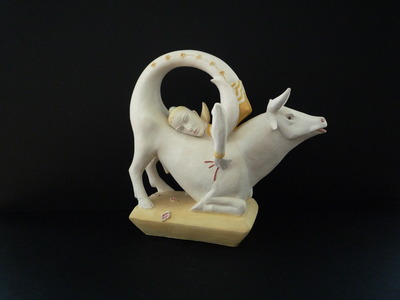George Walker

The work of George Walker, one of Britain's most important ceramic sculptors, is instantly recognizable, yet he has always had an 'outsider' status, working without reference to or even knowledge of ideas and trends within the art world. The themes with which his work deals include gender, authoritarian institutions and global geopolitics. His work is held in several private and public collections in England, Europe and the USA and has been featured in many publications.
George Walker’s work is a sophisticated commentary on interpersonal relationships in western culture, and on geopolitical and economic realities. Having studied painting originally, he turned to ceramics later in life. He found this a more satisfying medium than a flat surface for depicting the relationships and drama he wanted to express. The sculptures are frequently unsettling, confronting the viewer with uncomfortable aspects of their lives and psyches.
Walker’s work is also concerned with the history of sculpture in Western art both in terms of colour and form. Colour is an integral part of his work for its decorative effect but also to enhance narrative clarity. He is dismissive of the way art historians have rewritten the rules of what is acceptable in sculpture, a belief he sees as being founded upon the fact that ancient polychrome sculptures have survived down the ages without their original colours and often as broken torsos without arms and legs. The limbless female torso then became an accepted depiction of the female form in western sculptural traditions largely through the work of Rodin and Maillol. He has made a series of works re-uniting these torsos with their limbs.
With an ironic nod to the ceramic material with which he works, many of the sculptures are in the notional form of teapots or other vessels. The head of a figure may form a removable lid, an arched body the handle, and apertures in a mouth, shoe or gun barrel for example, may form a spout.










